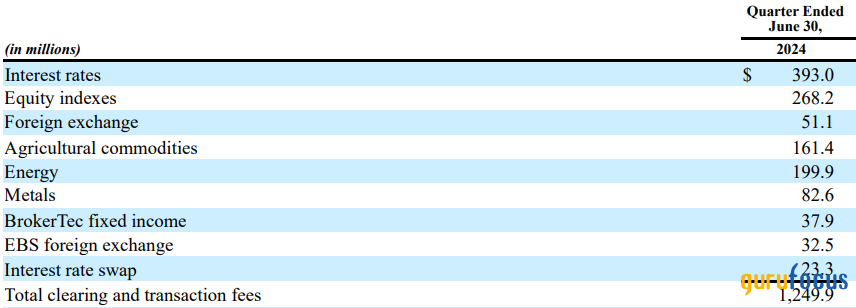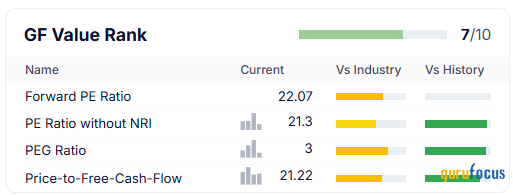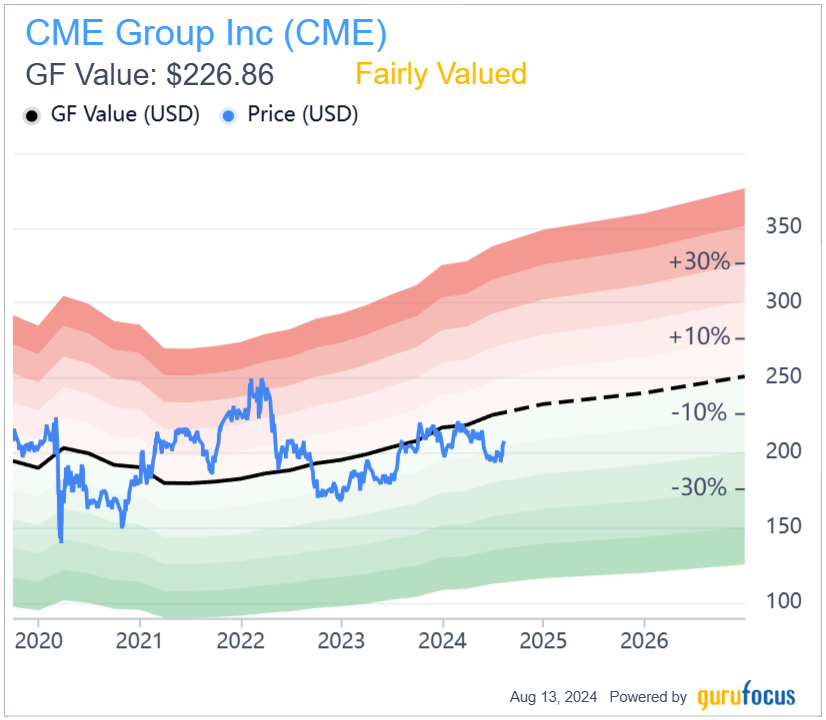CME Group Benefits From Market Volatility
Over the past couple of weeks, global markets have experienced significant price volatility due to fears of recession. Things got serious when the nonfarm payroll data for July was released, achieving a significantly lower figure than the one expected. At the same time, the unemployment rate turned out hotter than expected, triggering the Sahm Rule, which is an early indicator of a possible recession.
With all of that, the expectations for a 50 basis point rate cut in September soared, making the Japanese yen significantly appreciate against the U.S. dollar, causing fixed-income traders to close out their carry trades as currency risk amplified due to high volatility. Nonetheless, as leveraged assets were sold and brought back to their funding currency, the yen rebounded, causing implied risk to narrow.
A S&P 500 standout amid market volatility
While most companies had drastic drops on the first days of the month, there is an S&P 500 company that recorded gains and even opened higher on Monday, a day in which the Nasdaq Composite opened 6.34% lower. This company is CME Group Inc. (NASDAQ:CME). Founded in 1898, the company controls major financial derivatives exchanges in the U.S., including the Chicago Mercantile Exchange, New York Mercantile Exchange and the Commodity Exchange.
As a derivative exchange, the company earns revenue from two primary sources. One is transaction fees from the contracts negotiated through its exchanges, and two are clearing and settlement fees that could also come from over-the-counter sources. Apart from that, it also sells market data, but this is not a core revenue source.
From the cost side, non-compensation expenses mainly come from technology, which is a crucial aspect to bring transparency for every market participant, while trying to reduce latency in trades. Nonetheless, as of the second quarter, tech expenses only accounted for 12.10% of total costs and overall it is a company with high operating leverage with an Ebit of 65.30%.

Source: CME 10-Q
In essence, the more volume that occurs in the derivative markets, the better it is for CME. As derivatives are mainly designed to be a hedging tool, high volatility benefits it independently of the direction of the market since more contracts are negotiated. At the same time, its product exposure is well diversified among different contracts within FICC and Equity, without a significant concentration of risk to a particular asset class.
Diversification opportunity with rising volatility, while enjoying a growing dividend
With higher probabilities of a global recession and a U.S. election that polls suggest will be tight, adding a company such as CME to an equity portfolio is a smart diversification play. If things turn out negative, CME probably will not be as affected compared to the other large-cap names, and this is confirmed by its low beta of just 0.34. Additionally, the company had lower volatility of 12.20%, which is slightly below that of a diversified exchange-traded fund such as the SPDR S&P 500 ETF Trust (SPY) at 14.54%.
Year | Quarterly Dividend | Special Dividend | Total Payout |
2024 | $1.15 | pending | pending |
2023 | $1.10 | $5.25 | $9.65 |
2022 | $1.00 | $4.50 | $8.50 |
2021 | $0.90 | $3.25 | $6.85 |
2020 | $0.85 | $2.50 | $5.90 |
2019 | $0.75 | $2.50 | $5.50 |
2018 | $0.70 | $1.75 | $4.55 |
2017 | $0.66 | $3.50 | $6.14 |
2016 | $0.60 | $3.25 | $5.65 |
2015 | $0.50 | $2.90 | $4.90 |
2014 | $0.47 | $2.00 | $3.88 |
2013 | $0.45 | $2.60 | $4.40 |
CAGR | 8.90% | 7.28% | 8.17% |
Source: GuruFocus
Despite CME failing to outperform the market over the past year, it is an attractive holding for high-income investors. Since 2013, the company has had a dividend policy that pays consistent quarterly dividends and a special dividend at the end of the year. Overall, the regular dividend has grown at a compound annual rate of 8.90% and, in most cases, the special dividend is even higher than the four regular dividends received during the year. However, there is a drawback of the special dividend being far more volatile and with higher possibility of being cut.
Currently, the company's dividend yield is appealing and even more so after considering it predominately operates in a monopolized industry. Further, when multiplying the last regular dividend received of $1.15 by four and adding the previous special dividend of $5.25, the investment gets a potential dividend yield of 4.77% based on a price of $206.59. If that is considered a growth rate of 8.90% to the regular dividend and 7.28% to the special dividend, the yield to 5.15%.
CME has a fair intrinsic and multiple valuation
To an equity portfolio, CME provides diversification benefits, especially when they already hold large equity positions and even more now that uncertainty has risen. All of these factors are coupled with appealing dividend growth and existing yields. Nonetheless, these factors could alter the stock's potential to appreciate in times of high volatility when it is trading far above its intrinsic value.
However, this is not the case with CME since, based on the GF Value Line, its stock price sits approximately $20 below the suggested fundamental price of $226.86. This indicates a fair valuation of the stock.

Source: GuruFocus
Simultaneously, when analyzing key multiples, CME obtains a high valuation rating of 7 out of 10. This comes with particular strength in the adjusted price-earnings ratio of 21.30 (which is far below its 10-year median of 30.6) and in the PEG ratio of 3. Although the latter suggests an overvalued status of price-earnings against expected growth, the median PEG metric for the last 10 years has been much higher at 5.69, making it an appealing ratio versus history.
Takeaway
To conclude, in times of rising uncertainty, CME is a good play to reduce the beta exposure of an equity portfolio while at the same time holding a position in a company with strong monopolistic characteristics that has a wide moat and is likely to continue operating for many more decades.
Contrary to the majority of companies in the capital markets industry, higher levels of volatility augment the company's earnings potential with the possibility of, in good years, distributing free cash flows as special dividends to shareholders, which it has done for more than a decade. Its valuation does not cause any concern, however, since its key multiples are below historical one. Summing everything up, these are all great factors to be bullish on the stock over both the short and long term.
This article first appeared on GuruFocus.
